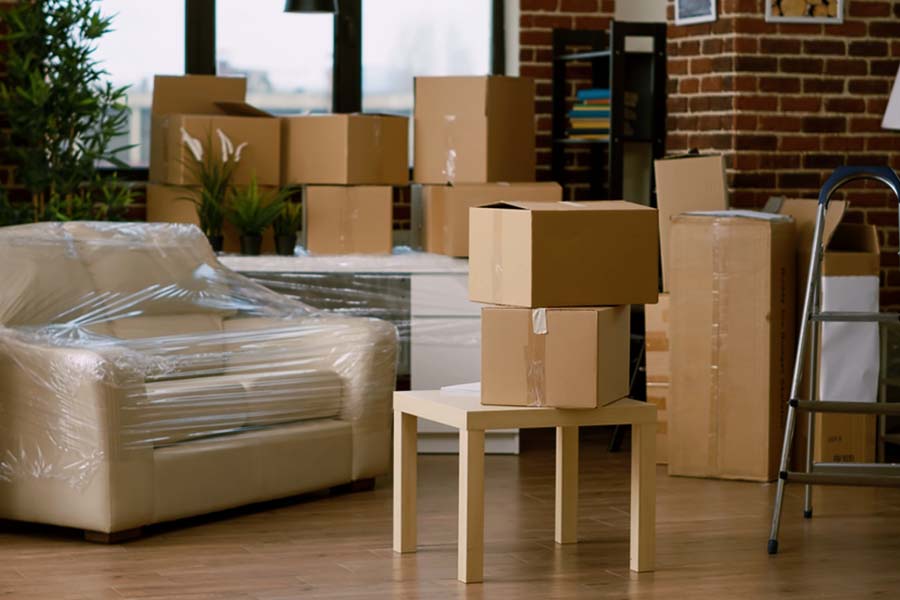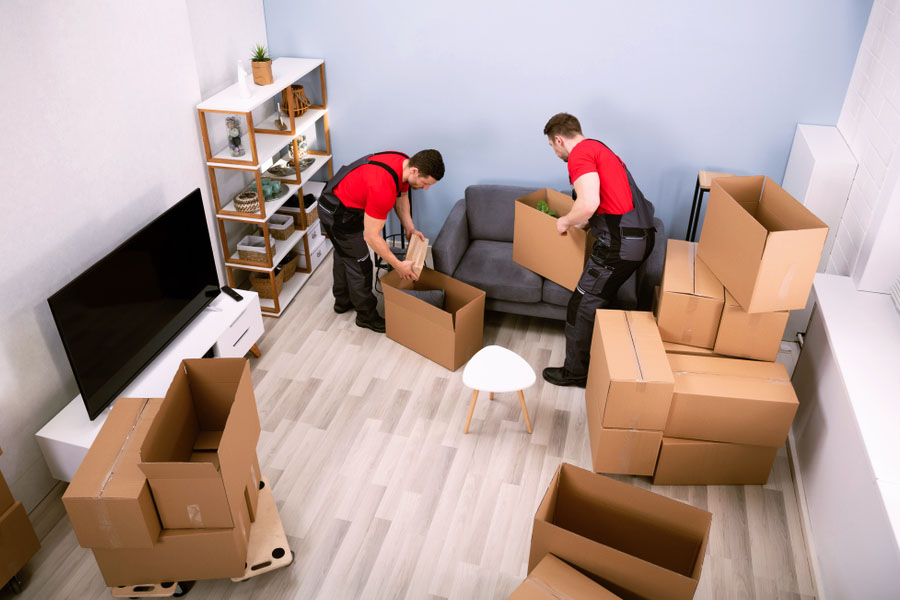What to Do with Furniture When Getting New Flooring?

Getting new flooring installed is an exciting home improvement project, but there’s a high chance you’ve already had or recently bought your furniture. When new floors go in, as a rule of thumb, everything needs to go out, but what to do with furniture when getting new flooring, especially large and heavy pieces?
Sure, like most good things, it takes a lot of planning and preparation to achieve the best results. But trust us when we say it’s worth the while. Improper handling can lead to scratches, dents, or even breakage, which can be costly to repair or replace.
Don’t let the furniture-moving conundrum dampen your excitement for your new flooring.
What to Do with Furniture When Getting New Flooring?
When getting new flooring, you should move furniture out of the room before installation. This allows installers to work efficiently and ensures the furniture doesn’t get damaged.
If moving furniture isn’t possible, consider lifting it onto sliders or asking installers for help. After the floor and insulation installation process, wait until the flooring is fully dry and cured before moving furniture back in to prevent damage or scratching.

Source: shutterstock.com / Photo Contributor: DC Studio
Create a Plan Before Flooring
Before starting your new flooring project, create a detailed floor plan or item list that accounts for all furniture and household items in the rooms being renovated. This will help you determine what needs temporary relocation, what can stay, and what might be permanently removed or discarded.
Evaluate each piece, considering size, weight, and ease of movement, and group items by room or area. Smaller, more manageable pieces can likely be temporarily relocated within the home.
Larger or heavier items may require disassembly, professional movers, or renting a storage unit during installation. Use this opportunity to declutter and remove any unwanted items for a fresh start with your new floors.
Once you’ve come up with a plan for what goes and what stays, you can move the furniture to:
Another room
If you’ve got an extra room in your house that you haven’t filled with furniture yet, you are in luck. You can relocate your furniture and decor in the extra room until the job in the other rooms gets done.
Temporarily moving furniture into another room and then back to its original place is an ideal solution for pieces from one or two rooms. However, if you need to move numerous permanent fixtures, you might end up creating more chaos than solving the initial problem.
It’s important to remember that installers require a clear path to move around and use their tools effectively when installing new flooring. Anything obstructing their access to the space will only add frustration.
Garage or rent a storage space
If you lack space in your home, we advise you to get the furniture out of the house. If you have a garage, even better. But if you have sensitive furniture susceptible to temperatures and humidity, the garage might not be the best place during certain seasons. In such cases, renting a storage space could be the best alternative.
For more extensive projects or limited home space, consider renting an off-site self-storage unit. Or maybe you want your stuff out of sight, out of mind. Choose the appropriate size based on your needs and the rental duration. Alternatively, portable storage containers can be delivered to your property.
This offers convenience, allowing you to load at your own pace. It also gives you easy access to belongings throughout the project. Evaluate your specific requirements and budget to determine the best solution for securely storing and protecting your furniture during the flooring installation process.
Moving Furniture Safely
When moving furniture, safety should be the top priority to avoid injury and prevent damage. Clear a wide path, removing obstacles and securing doors. Use proper lifting techniques by bending at the knees, keeping your back straight, and lifting with your legs.
Utilize tools like dollies, furniture sliders, and lifting straps to make moving easier and safer. Wrap furniture in padding to prevent scratches and cover floors along the moving path.
Take breaks as needed, wear appropriate shoes, and don’t attempt to move anything too heavy without additional help. Following these tips can ensure a smooth and safe furniture moving experience.

Source: shutterstock.com / Photo Contributor: Andrey_Popov
Conclusion
Relocating furniture for a new flooring installation can seem like a daunting task, but with proper planning and execution, it can be a seamless experience. What to do with furniture when getting new flooring?
This comprehensive guide has provided valuable insights and practical solutions to navigate this often-overlooked aspect of a flooring project. From evaluating the merits of various furniture moving options to tips on safeguarding your belongings, these insights will help you make better decisions at every step.
